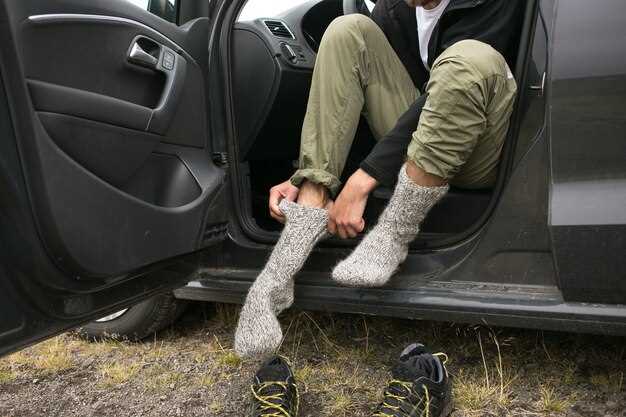
Off-roading offers an exhilarating experience for adventure seekers, allowing drivers to explore rugged terrains that traditional roads cannot access. However, this thrilling activity comes with its own set of challenges, particularly concerning the vehicle’s undercarriage. The undercarriage houses essential components, including the fuel tank, transmission, and exhaust system, which are vulnerable to damage from rocks, debris, and uneven surfaces.
To ensure a safe and enjoyable off-roading experience, it is crucial to implement effective strategies for protecting your vehicle’s undercarriage. This not only enhances the performance and longevity of your vehicle but also provides peace of mind while navigating through challenging landscapes. With the right precautions and modifications, you can significantly reduce the risk of undercarriage damage.
In this article, we will discuss various methods and tools that can help shield your undercarriage during off-road excursions. From protective gear to essential maintenance practices, we’ll cover everything you need to know to keep your vehicle in optimal condition while enjoying the great outdoors. Prepare yourself for an adventure by equipping your vehicle with the necessary protections, ensuring both your safety and your vehicle’s durability.
Choosing the Right Skid Plates for Your Vehicle

Selecting appropriate skid plates is crucial for ensuring optimal protection for your vehicle’s undercarriage while off-roading. First, consider the material options available. Skid plates are typically made from aluminum, steel, or high-density plastic. Aluminum provides a good balance of weight and strength, making it a popular choice. Steel, while heavier, offers superior durability and impact resistance. High-density plastic is lightweight and can be suitable for lighter off-road vehicles, but may not withstand extreme conditions.
Next, evaluate the specific areas of your vehicle that require protection. Common components that benefit from skid plates include the oil pan, transmission, and gas tank. Some skid plates are designed to cover multiple parts in a single unit, which can simplify installation and enhance protection. Ensure that the skid plates you choose are tailored to your vehicle model to guarantee a proper fit and coverage.
Compatibility is another critical factor. Check if the skid plates can be installed without extensive modifications to your vehicle. Plates that require cutting or drilling might not only affect your vehicle’s warranty but can also complicate future repairs. Opt for options that allow for easy installation using factory mounting points whenever possible.
Additionally, investigate the thickness and design of the skid plates. Thicker plates generally offer better protection, but they can also add weight, potentially impacting performance and fuel efficiency. A well-engineered skid plate with a thoughtful design can provide the necessary strength while minimizing weight.
Finally, consider your off-roading style and frequency. If you frequently tackle rugged terrain, investing in heavier-duty skid plates may be worth the cost. For occasional adventurers, lighter options may suffice. Ultimately, selecting the right skid plates involves a balance between protection, weight, cost, and compatibility with your vehicle’s requirements.
Strategies for Navigating Rocky Terrain

When tackling rocky terrain, the right strategies can make a significant difference in both your vehicle’s performance and its longevity. One of the foremost tactics is to maintain a slow and steady speed. This approach allows for better control and helps prevent damaging your undercarriage on rough surfaces.
Choose Your Line Carefully: An essential strategy in off-roading is selecting the best line. Look ahead and determine the path that has fewer obstacles or more forgiving angles. Avoiding sharp rocks and steep drop-offs will minimize the risk of scraping the undercarriage.
Use Tire Pressure to Your Advantage: Lowering tire pressure can enhance traction by increasing the tire’s contact area with the ground. This flexibility allows the tires to better navigate over rocks without placing excessive stress on the suspension and undercarriage.
Engage 4-Wheel Drive: Utilizing 4WD mode is vital when driving on rocky surfaces. This setting distributes power to all wheels, improving traction and stability. Make sure you engage it before you encounter difficult sections to maximize its effectiveness.
Employ Spotters: When traversing particularly challenging rocky sections, having a spotter can be invaluable. A spotter can provide verbal guidance, helping you avoid obstacles that may not be visible from the driver’s seat and ensuring that your vehicle maintains a safe and effective trajectory.
Utilize Momentum Wisely: In some cases, building a small amount of momentum can assist in overcoming larger rocks or steep inclines. However, it’s crucial to find a balance; too much speed can lead to loss of control and potential damage to the vehicle.
Be Prepared to Adjust: Conditions can change rapidly on rocky trails. Be ready to adapt your driving style based on the terrain you encounter. If you find yourself in a rut or stuck between boulders, remain calm and assess your options before proceeding.
By implementing these strategies, you can effectively navigate rocky terrain while protecting your vehicle’s undercarriage and enhancing your off-roading experience.
Routine Maintenance Tips for Undercarriage Protection
Regular inspections are essential for maintaining the integrity of your vehicle’s undercarriage. Schedule visual checks every few months, focusing on key components like the frame, suspension parts, and exhaust system. Look for signs of rust, corrosion, and physical damage that could compromise performance and safety.
Cleaning the undercarriage thoroughly after off-roading is crucial. Use a pressure washer to remove mud, dirt, and debris that can trap moisture and promote rust. Pay special attention to areas where dirt accumulates, such as around the axles, differential, and suspension components.
Applying a rust inhibitor is an effective preventive measure. Choose a high-quality product designed for automotive use and apply it after cleaning the undercarriage. This will provide a protective barrier against moisture and chemicals that can accelerate corrosion.
Inspect and replace damaged protective components, such as skid plates and rock sliders. These parts absorb impacts from rough terrain and prevent direct damage to your vehicle’s undercarriage. Ensure they are securely fastened and in good condition before embarking on off-road adventures.
Regularly check the condition of your vehicle’s seals and gaskets. These components prevent water and debris from entering sensitive areas. If you notice any wear or failure, replace them promptly to maintain a proper seal and protect against moisture intrusion.
Keep an eye on fluid levels, especially for the transmission and differentials. Leaks can lead to inadequate lubrication and increased wear on critical components. Address any leaks immediately to ensure optimal performance and component longevity.
Consider an undercoating treatment, especially if you frequently drive in harsh conditions or live in areas with heavy road salt usage. This adds an extra layer of protection to the undercarriage, helping to prevent rust and corrosion.




